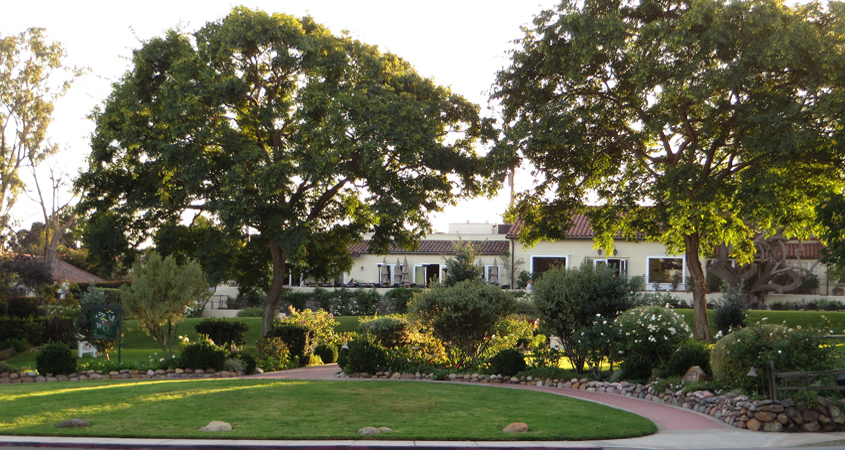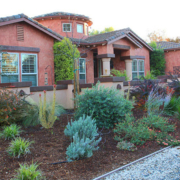Microclimate Matching in Your Landscaping Plan
Earlier in our Conservation Corner series, we described how to map the different types of microclimates present in your landscaping. Using this information helps homeowners arrange plants in a new sustainable landscape. For the most efficient water use, plants should be grouped together with similar water needs according to their preferred microclimate.
In nature, plants that like lots of water are found along the banks of a stream, or grouped together at the base of a depression. Plants that need fast-draining soils so roots don’t rot might be found on hillsides. Plants that love lots of sunshine won’t grow in the shade of a tree.
Follow The Microclimate Map
Look to the Microclimate Map for smart guidelines on choosing landscape plants. Consider this example yard with three identified microclimates:
- A front yard in full sun most of the day.
- A moist depressed area in full sun. This area will retain moisture more than the rest of the yard, so you could use this area for rain catchment. Raise hillside areas surrounding the depression and allow them to drain freely.
- A shady area under the canopy of a neighbor’s large tree.
Three Different Plant Neighborhoods

Areas of your landscaping under large shade trees become individual microclimates. Photo: Ken Lund/Creative Commons License
When selecting landscaping plants, the yard in this example will require at least three different groupings of plants.
- Sun-loving plants that prefer their roots dry and in fast-draining soil
- Sun-loving plants tolerant of wet feet in winter months, which thrive in heavier clay soils
- Plants tolerant in dry shaded areas
A final consideration before heading to the local nursery or garden center: how will you irrigate your plants? Check the Plant Factors for each of the plants to make sure their water needs are all similar in each area. A previous Conservation Corner feature has information about Plant Factors.
Plants Speak Latin
Many plants have similar common names in English. Shopping for plants by their common names can lead to confusion between two very different plants. Instead, the best way to shop for plants is to use the Latin name. This reduces any miscommunication and any surprises in your landscaping.
This article is part of a year-long series inspired by the 71-page Sustainable Landscapes Program guidebook available at SustainableLandscapesSD.org. The Water Authority and its partners also offer other great resources for landscaping upgrades, including free WaterSmart classes at WaterSmartSD.org.




